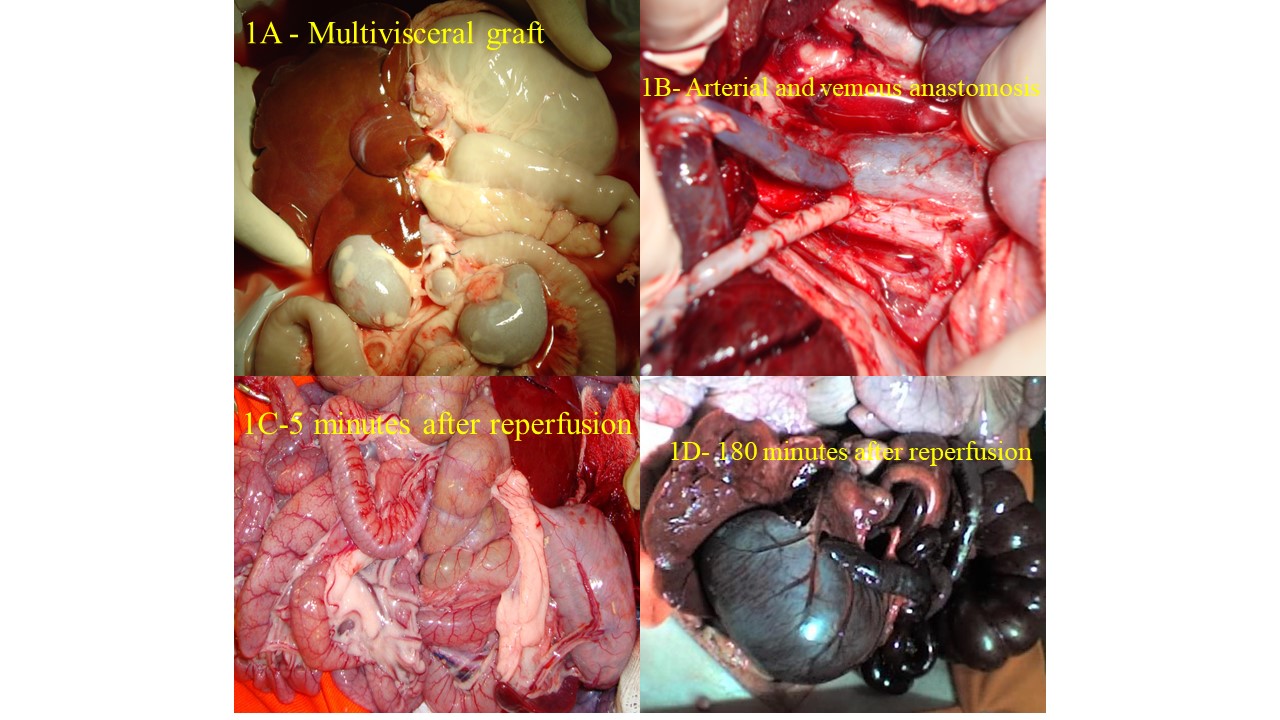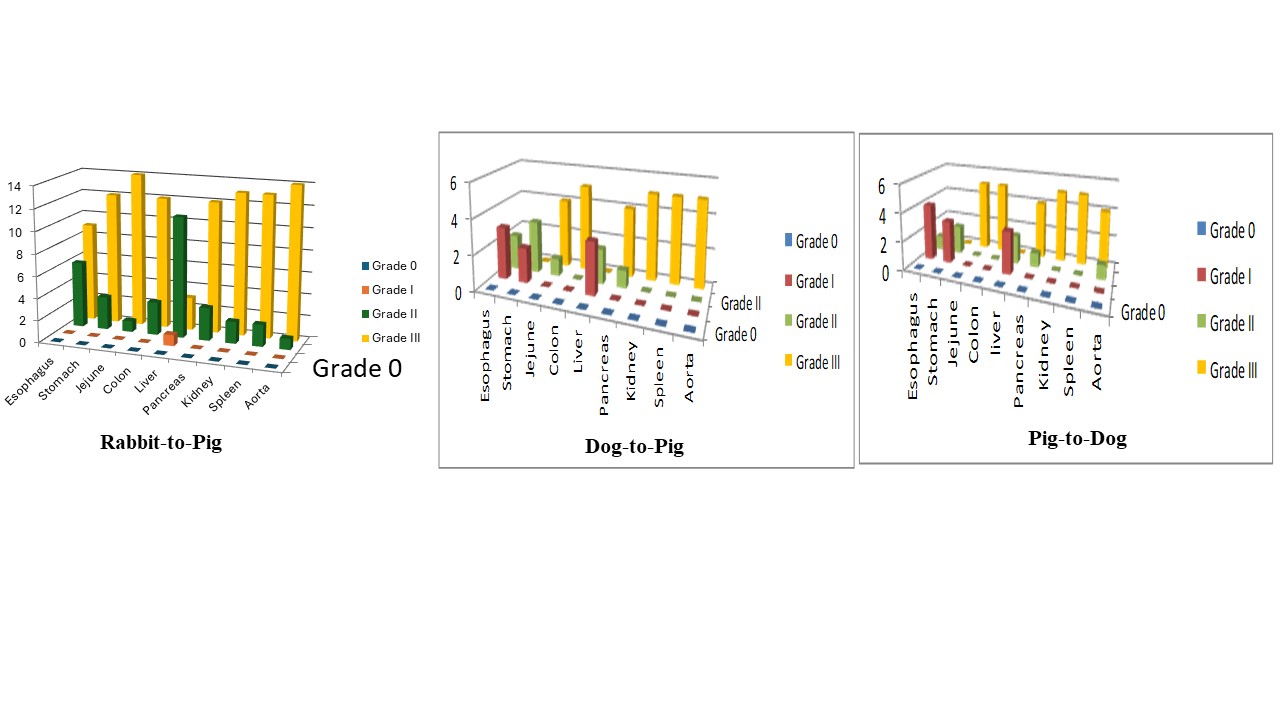Evidence of liver tolerance in a model of hyperacute rejection after discordant xenotransplantation
Flávio Galvao1, Andre D Lee1, Giovanna M Ferreira1, Eduardo Pompeu1, Pedro C Cassino1, Luiz A Carneiro-D’Albuquerque1.
1Gastoenterolgy, Hospital das Clinicas da Fculdade de Medicina d Universidade de Sao Paulo, São Paulo, Brazil
Introduction: Multivisceral transplantation (MT) is currently a clinical reality worldwide. Xenotransplantation is a potential solution for organs shortage, mainly for MT. In this pioneer study we portray multivisceral xenotransplantation and describe the features of hyperacute rejection using three species combination.
Method: Multivisceral graft containing esophagus, stomach, small intestine, colon, liver, pancreas, spleen and kidneys were implanted heterotopically as previously described (1-3) using 3 different species combinations: dog-to-pig (n=5); pig-to-dog (n=5) and rabbit-to-pig (n=15). Multivisceral allotransplantation using pig-to-pig (n=5), dogs-to-dog (n=4) and rabbits-to-rabits (n=5) composed the negative control group of hyperacute rejection. Three hours after graft reperfusion we performed serial endoscopy of stomach and bowels and collected samples from all graft organs for histology and IgG fixation assessment by immunofluorescence.

HR were graded as 0 = normal tissue,;I = mild HR (edema, vascular congestion, and clumping of platelets in the microcirculation), II = moderate HR (diffuse edema, presence of some fibrin thrombi, intense vascular congestion, epithelial dysplasia, and foci of hemorrhage), and III = severe HR (presence of fibrin thrombi in all vessels, extensive interstitial edema, diffuse interstitial hemorrhage, and confluent necrosis).
All animals survived until the end of the experiment. HR was macroscopically noted in xenograft around 15 minutes after reperfusion. HR were observed by microscopy in all organs from multivisceral xenograft with predominance of mild and moderate HR in the liver and severe HR in all othe organs.

IgG fixation was strong in xenografts in the sites of HR. The occurrence of HR was macroscopically absent in allograft up to experimental end point. Autopsy of allografts reveled normal appearance or mild reperfusion injury in all organs and absence of IgG fixation by immunofluorescence.
This research introduces multivisceral xenotransplantation as a viable method for the future. Features of HR was similar in the three different species combination appraised. HR was less aggressive in liver (tolerance?). IgG fixation was strong in the sites of HR. Allografts reveled normal appearance and absence of IgG fixation.
Referenced:
1. Galvao FH, et al. Xenotransplantation. 2008;15:184-90. doi: 10.1111/j.1399-3089.2008.00470.x.
2. Galvão FH, et al. Endoscopic features in a model of multivisceral xenotransplantation. Xenotransplantation. 2010;17:423-8. doi: 10.1111/j.1399-3089.2010.00609.x.
3. Galvao FH, et al. IgG profile in hyperacute rejection after multivisceral xenotransplantation. Xenotransplantation. 2012;19:298-304. doi: 10.1111/xen.12002.
